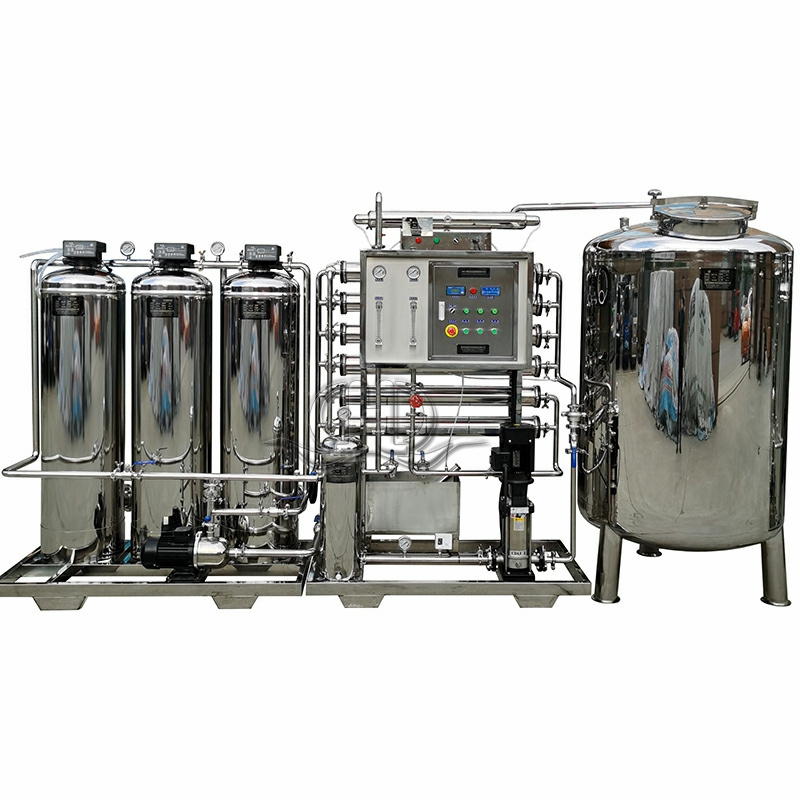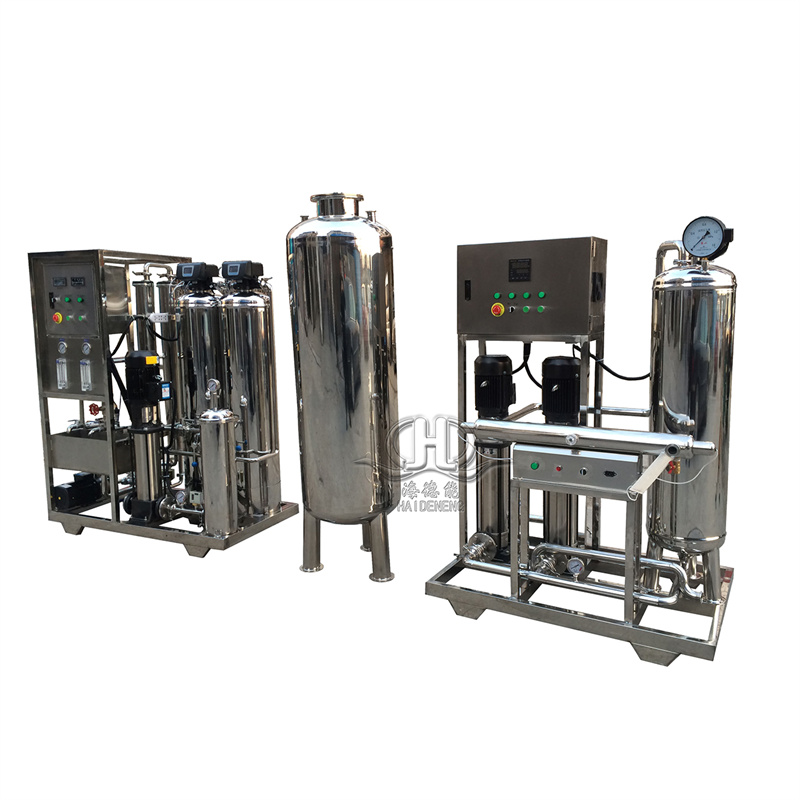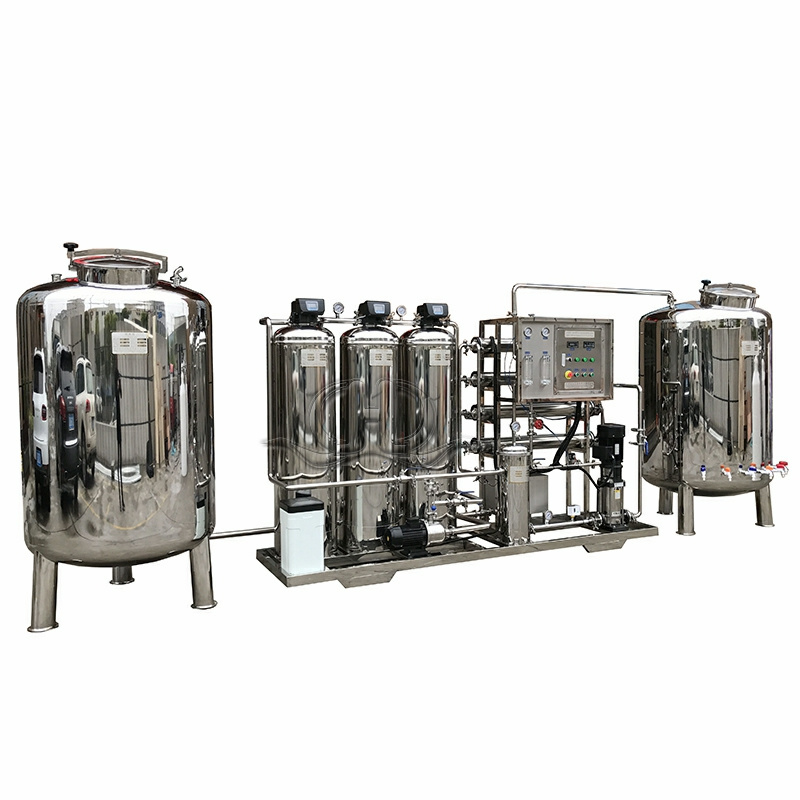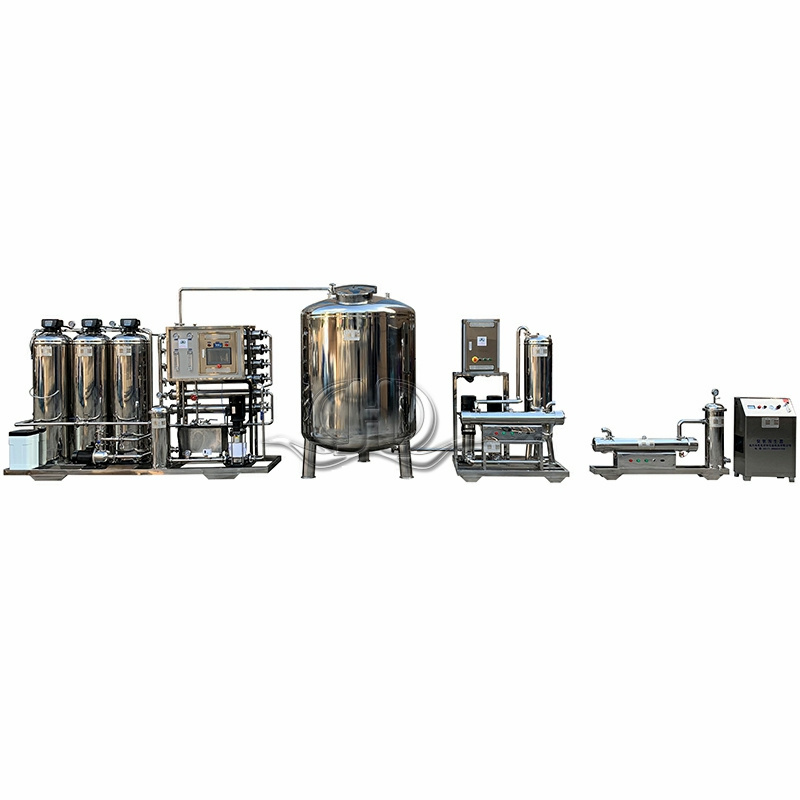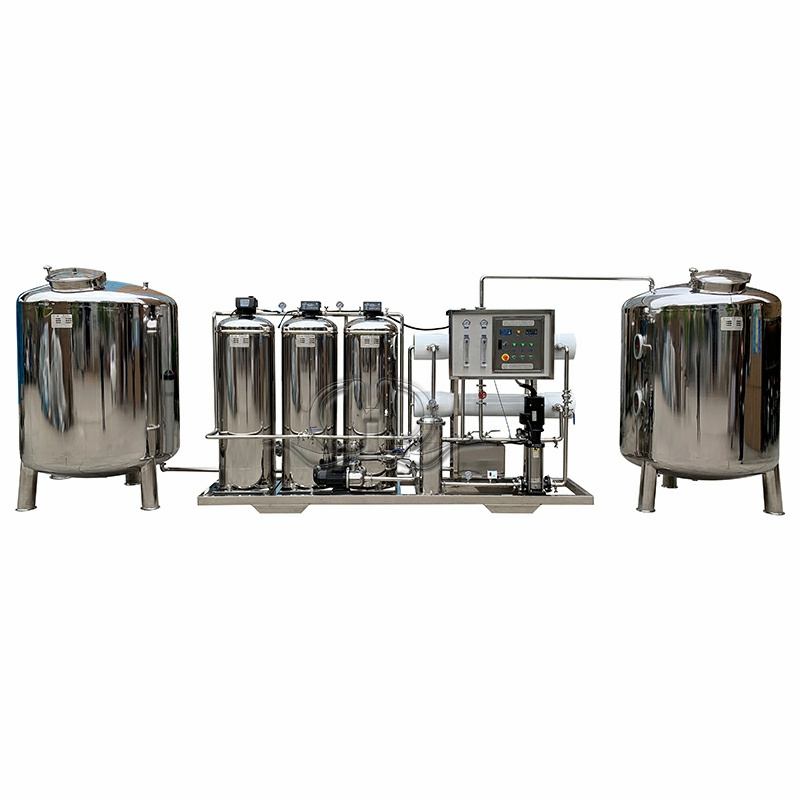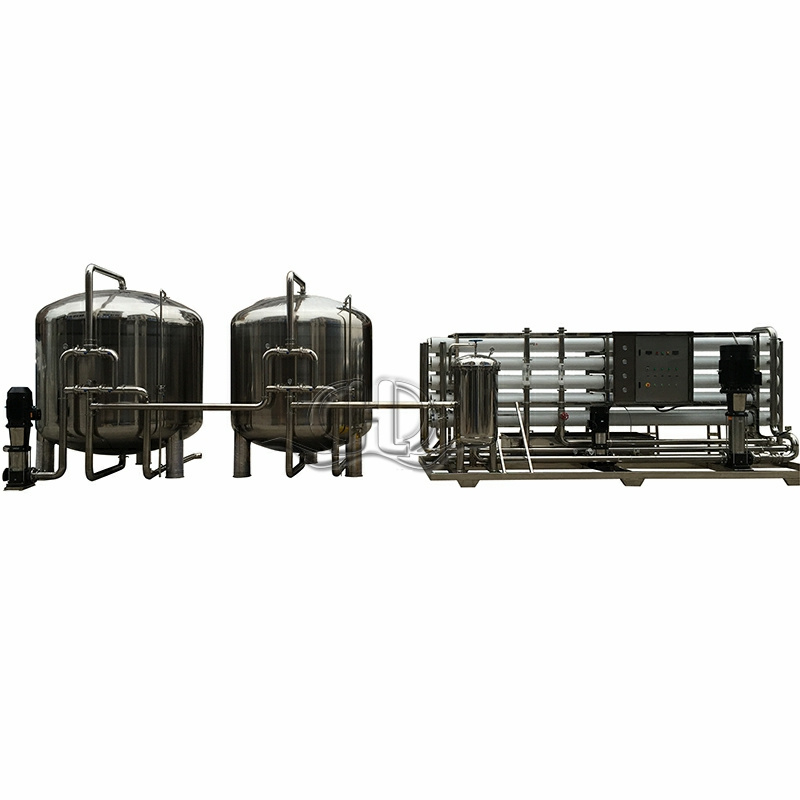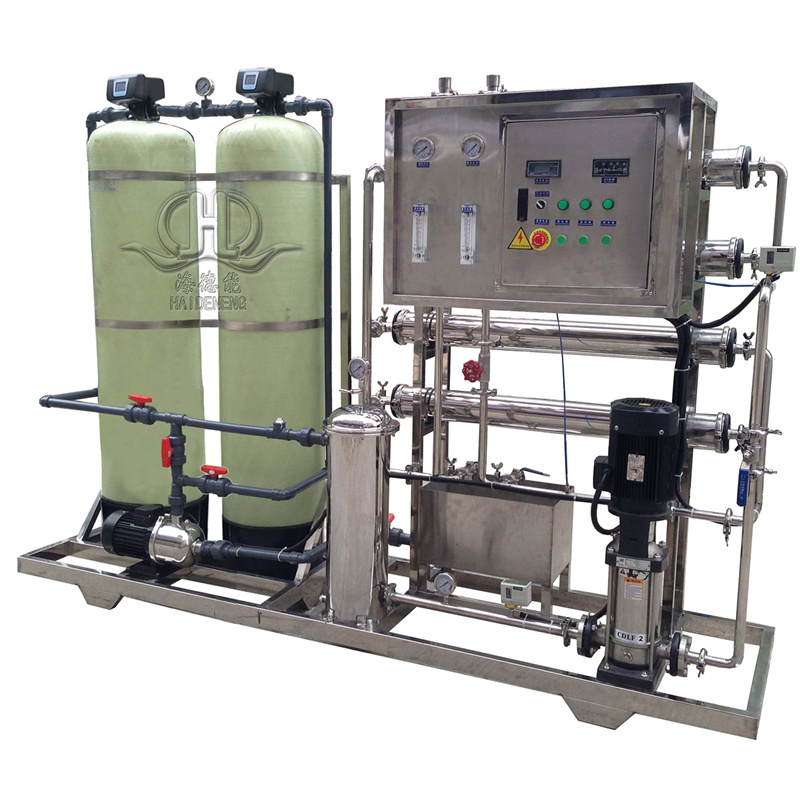ro filtration sytem water purifying machine
Introduction and Maintenance Knowledge of Reverse Osmosis Pure Water Equipment
|
Product Detail |
|||||
|
1 |
Inlet water Type |
Well water/ underground water |
Outlet water Type |
Purified Water |
|
|
2 |
Inlet water TDS |
Below 2000ppm |
Desalination rate |
98%-99% |
|
|
3 |
Inlet Water Pressure |
0.2-04mpa |
Outlet water Usage |
Coating material production |
|
|
4 |
Inlet Membrane Water SDI |
≤5 |
Inlet Membrane Water COD |
≤3mg/L |
|
|
5 |
Inlet Water temperature |
2-45℃ |
Outlet capacity |
500-100000 litre per hour |
|
|
Technical Parameters |
|||||
|
1 |
Raw Water Pump |
0.75KW |
SS304 |
||
|
2 |
Pre-treatment part |
Runxin automatic valve/ stainless steel 304 Tank |
SS304 |
||
|
3 |
High pressure Pump |
2.2KW |
SS304 |
||
|
4 |
RO Membrane |
Membrane 0.0001micron pore size desalination rate 99%,recovery rate 50%-60% |
Polyamide |
||
|
5 |
Electrical control system |
Air switch, electrical relay, alternating current contactor switch, control box |
|||
|
6 |
Frame and Pipe Line |
SS304 and DN25 |
|||
|
Function Parts |
|||||
|
NO |
Name |
Description |
Purifying Accuracy |
||
|
1 |
Quartz Sand Filter |
reducing turbidity, suspended matter, organic matter, colloid etc. |
100um |
||
|
2 |
Activated carbon filter |
remove the color,free chlorine, organic matter, harmful matter etc. |
100um |
||
|
3 |
Cation softener |
reducing water total hardness, make water soft and tasty |
100um |
||
|
4 |
Pp filter cartridge |
prevent large particles, bacteria, viruses into ro membranes, remove particles, colloids, organic impurities, heavy metal ions |
5 Micron |
||
|
5 |
Reverse osmosis membrane |
bacteria, virus, heat source etc. harmful substance and 99% dissolved salts. |
0.0001um |
||
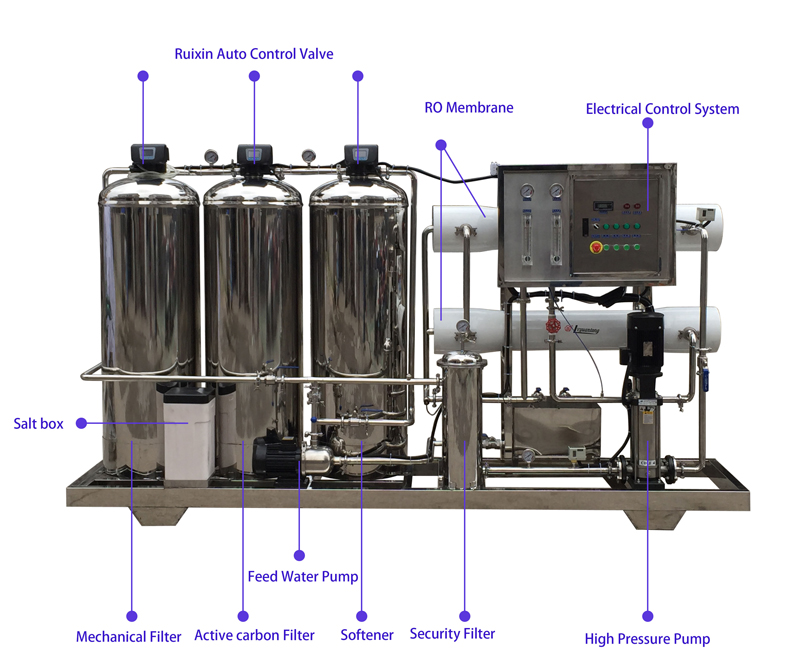
Processing: Feed water Tank→feed water pump→quartz sand filter→active carbon filter→softener→security filter→High pressure Pump→reverse osmosis system→pure water Tank
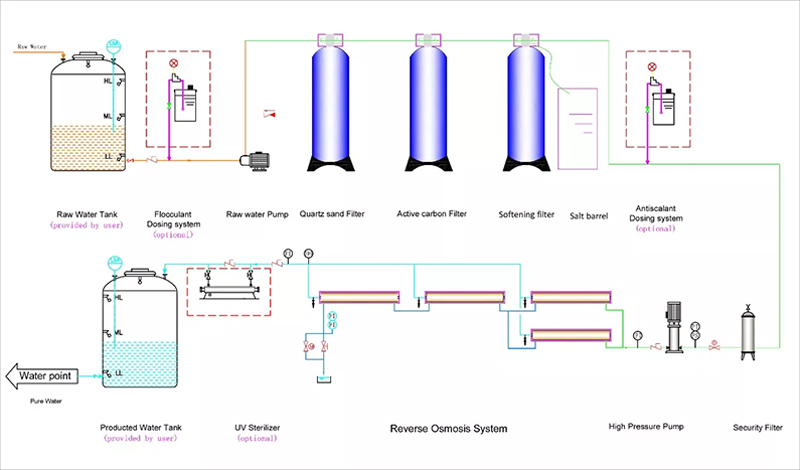
Precautions for using UV ultraviolet processors:
UV ultraviolet processor is a physical process and is one of the technologies widely used in sewage treatment. UV rays have bactericidal effects, and with the rapid development of technology, the share of UV ultraviolet processors in the field of water treatment has also been greatly improved.
The following are the precautions to be taken when using UV ultraviolet processors:
(1) UV rays should not be directly irradiated on human skin.
(2) UV rays have certain requirements on the temperature and humidity of the working environment: the irradiation intensity is relatively stable at above 20℃; the irradiation intensity increases with temperature between 5-20℃; the irradiation ability is stronger when the relative humidity is below 60%, and the sensitivity of microorganisms to UV rays decreases when the humidity increases to 70%; the sterilization power decreases by 30%-40% when the humidity increases to 90%.
(3) When sterilizing water, the water layer thickness should be less than 2cm, and the dosage of irradiation absorbed by water passing by should be more than 90000UW.S/cm2 to make the water effectively sterilized.
(4) When there is dust and oil stains on the surface of the lamp tube and sleeve, it will hinder the penetration of UV rays, so alcohol, acetone, or ammonia should be used to wipe it frequently (generally once every two weeks).
(5) When the lamp tube is started, it needs to be heated to a stable state, which takes a few minutes, and the terminal voltage is relatively high. After the processor is turned off, if it is immediately restarted, it is often difficult to start and it is easy to damage the lamp tube and reduce its service life; therefore, it is generally not advisable to start frequently.
How to evaluate the purity of water?
When it comes to evaluating the purity of water, most people focus on the clarity of water and assume that the clearer the water, the purer it is. However, water purity cannot be determined by clarity alone. Pure water refers to water that is free of impurities and consists only of H2O. Water purity is evaluated based on two factors: the amount of dissolved ionic impurities in the water, and the amount of suspended solids in the water.
Water can contain suspended solids, such as clay, sand, organic and inorganic matter, and aquatic organisms, which can make the water appear turbid and have a certain degree of turbidity. In water quality analysis, the standard turbidity unit is defined as 1 mg of SiO2 per liter of water, also known as 1 degree. Generally, the lower the turbidity, the cleaner the solution. In industrial water treatment, methods such as coagulation, sedimentation, and filtration are primarily used to reduce the turbidity of water.
Substances dissolved in water are commonly present in the form of ions, including cations such as calcium, sodium, and potassium, and anions such as carbonate, sulfate, and hydroxide. The amount of ions in water is determined by the water’s conductivity, with lower ion concentrations resulting in poorer conductivity. In the production of high-purity water, techniques such as electrodialysis, reverse osmosis, and ion exchange resin technology are used to remove anions and cations from the water.
Different types of water have varying electrical conductivities: ultrapure water has a conductivity less than 0.10 μS/cm; distilled water has a conductivity of 0.2-2 μS/cm; natural water has a conductivity mostly between 80-500 μS/cm; and mineralized water can have a conductivity as high as 500-1000 μS/cm.


